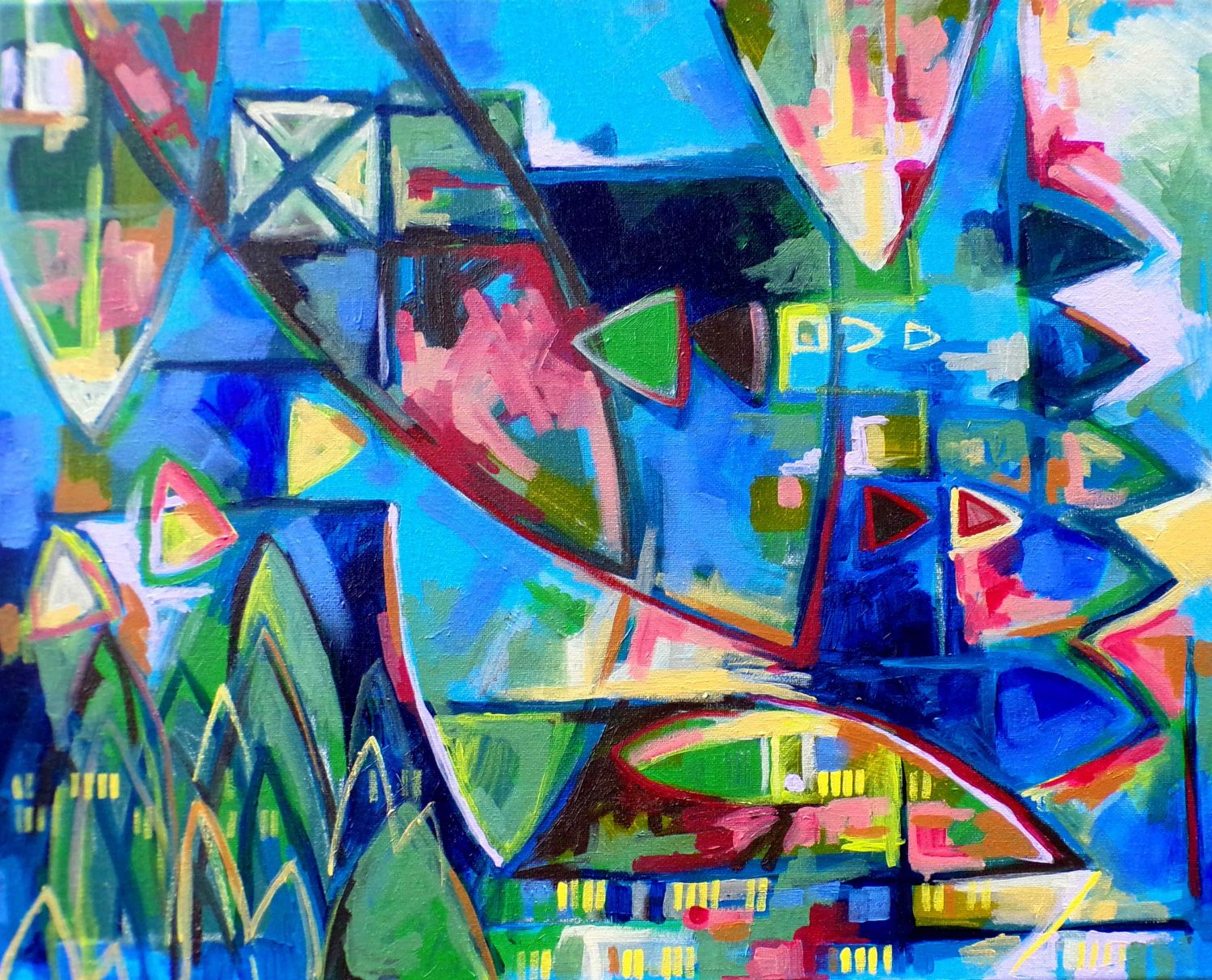
In November 2020, in the wake of the pandemic and George Floyd’s murder, Roymieco Carter (B.F.A. ’91) was talking to a friend and fellow artist and educator Steven M. Cozart. Cozart was looking to connect Black and Brown male artists up and down the East Coast—many of whom he knew, but who didn’t know each other—and wanted Carter to join him.
The group’s first virtual meeting lasted four hours, during which the artists discussed their work in progress and bonded over shared experiences in educational institutions and fine art spaces. They continued to meet monthly—then with a two-hour limit to keep everyone focused—with countless follow-up meetings and one-on-one conversations.

“We would get together, chop it up,” Carter says. “For instance, we talked about what it meant to be teachers. We had a group of 15 or 16 Black men and didn’t realize at first that the majority of us had entered the teaching profession. Among this group, we had close to 700, 800 years of teaching experience.”
Their conversations and growing relationships also influenced each artist’s work. Carter says his own work, which looks at the history of global slavery in different cultures, was shaped by difficult conversations about the role of power constructs and subjugated labor in empire-building.
“I can’t talk to everybody about these subjects,” he says. “People get uncomfortable, they get nervous. But this group was able to do that.”
After a few years, the group now known as the Chop Shop Artists Collective decided it was time to elevate its presence with a public exhibition. They assembled a proposal with collected images and artists’ statements and started to approach galleries.
“We were very particular about where we wanted to go,” Carter says. “We were thinking about the statement we wanted to make, and where we wanted to share our information. We couldn’t just stick it anywhere. After a conversation with the [Harvey B. Gantt Center for African-American Arts + Culture] in Charlotte, we brought it back to the group and everyone agreed that would be the ideal place for us.”
The exhibition “Chop Shop: We Are Here,” which runs through October 26, features 15 artists working in various media, including painting, drawing, sculpture, and mixed media. Some artists are well-established, while others made their first major showing. Carter and Cozart served as co-curators.

In addition to appearing in the exhibition as an artist, Carter co-curated “We Are Here” with Cozart. It was a natural extension of his role as Director of University Galleries at North Carolina A&T State University, where he also serves as a graphic design professor and director of the Visual Arts Program.
When Carter graduated from VCUarts, becoming an educator was the furthest thing from his mind. Instead, he got his start as a graphic designer for commercial brands in Virginia. He designed logo treatments and branding systems for apparel and advertising, and later worked on NCAA licensing and branding for ACC schools.
After several years, he landed a role as a creative director. He loved the work but also sensed a professional ceiling was looming.
“The only thing left to do was become a principal or do a horizontal move and work as a creative director with another firm,” Carter says. “I felt like the next step was doing business, not creative. I wanted to keep doing creative.”
At the same time, Carter was teaching at VCUarts, helping students who wanted to follow in his footsteps in graphic design and art direction. He decided to return to graduate school at Penn State University and earned his M.F.A. in graphic design in 2001.
He landed his first teaching role at DePaul University in Chicago, then returned home to North Carolina to work for UNC Charlotte and Wake Forest University. From there, he decided to move into administration and took his current role at North Carolina A&T.
For Carter, teaching is also a way to pay forward his experience at VCUarts. In particular, he models his approach after former Dean Murry N. DePillars, a mentor who stepped in to help Carter secure financial assistance when he was in danger of having to leave the program.
“He set my feet on a path that I’m still on to this day,” he says. “The one thing I could say about VCUarts is that they prepared me. I was able to move freely and find success professionally because of the training I got from my instructors. It all comes back to the people who saw something in me or believed in me.”